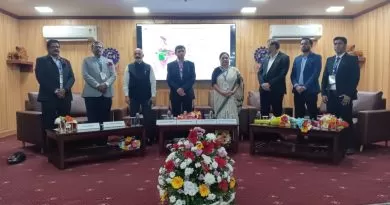Unprecedented La Nina event alters winter air quality trends in India: Study

A recent study suggests that an unprecedented triple-dip La Nina event, exacerbated by climate change, led to an unique air quality shift during the 2022-23 winter season in India. The research, led by Gufran Beig, chair professor at the National Institute of Advanced Studies, highlighted the significant impact of rapidly changing climate alongside local emissions on air quality.
Published in the Elsevier Journal, the study reveals a surprising contrast between northern and peninsular India. While air quality improved in the north, peninsular cities experienced a rise in pollution levels during the winter season.
Also read: Monitoring gaps in air quality across Indian cities emerge
Ghaziabad, Rohtak, and Noida in north India exhibited notable improvement, with a 33 per cent, 30 per cent, and 28 per cent reduction in pollution, respectively. Even Delhi, a critical and landlocked city, showed a 10 per cent improvement. On the other hand, Mumbai saw the highest deterioration with a 30 per cent increase in PM2.5 levels, followed by cities like Coimbatore (28 per cent), Bengaluru (20 per cent), and Chennai (12 per cent).
The study links this unusual pattern to the triple-dip La Nina event, a first in the 21st century, which was influenced by climate change. RH Kripalani, a climate scientist at the Indian Institute of Tropical Meteorology and co-author of the report, explains, “This phenomenon impacted the large-scale wind pattern, preventing stagnation conditions in north Indian cities, thus improving air quality. However, it led to calmer conditions in peninsular cities, resulting in transboundary pollution and deteriorating air quality.”
To validate their findings, scientists used the advanced NIAS-SAFAR air quality forecasting model, incorporating a chemical-transport model and modern artificial intelligence algorithm. Beig emphasises the importance of acknowledging such extreme occurrences in air pollution as manifestations of climate change, urging a long-term strategy to reduce anthropogenic emissions for improved air quality and climate change mitigation.
(with agency inputs)



